

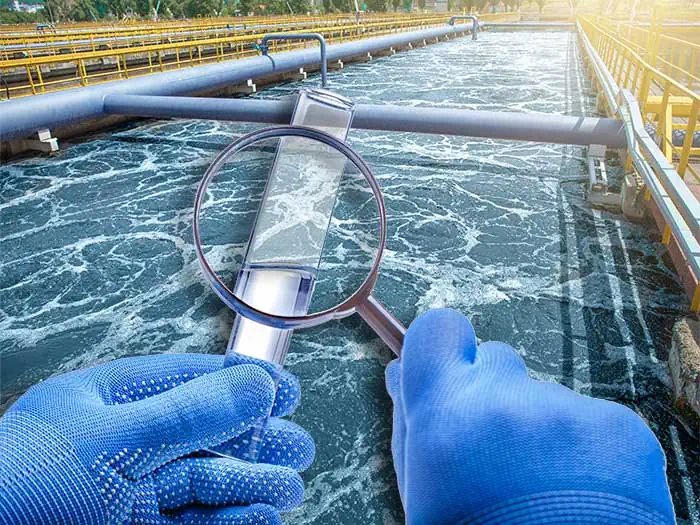
In partnership with ECT2, SCS Engineers’ participation in the design and construction of the PFAS treatment facility at Champ Landfill, a Waste Connections Company in St. Louis, MO, marked a significant milestone for our client. This project presented us with the challenge of addressing environmental concerns and regulatory requirements related to PFAS contamination in the landfill’s wastewater.
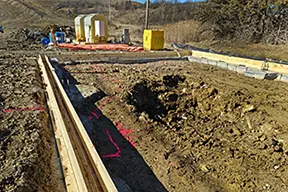
The ECT2 leachate – wastewater treatment process involves intercepting wastewater at an average flow rate of 73 gallons per minute, with peak flow rates of up to 81 gallons per minute. After removal of the PFAS, the wastewater discharges back to the original sanitary sewer system, where it continues to a wastewater treatment facility for final treatment. The process removes the PFAS from the leachate – wastewater, which is critical since landfills are passive receivers of PFAS ladened products by consumers and industry.
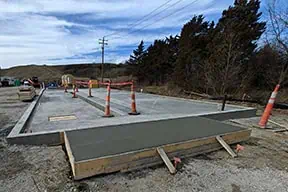
The outcomes of this project were highly successful. The new wastewater treatment facility was completed within the specified timeframe and budget, providing Waste Connections with a full-service solution to manage PFAS contamination at Champ Landfill. This solution contributed to environmental protection, ensured current and future regulatory compliance, and improved waste management practices at the site. We’ll step you through the ECT2 system below.
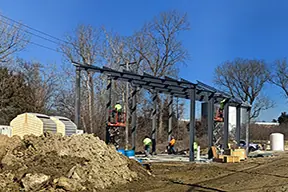
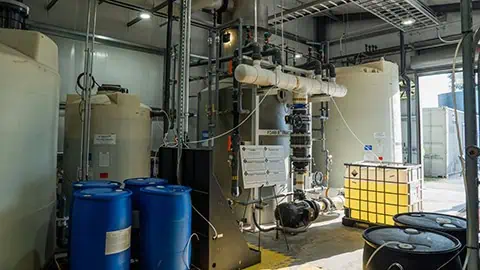
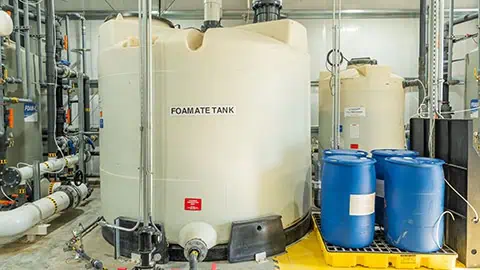
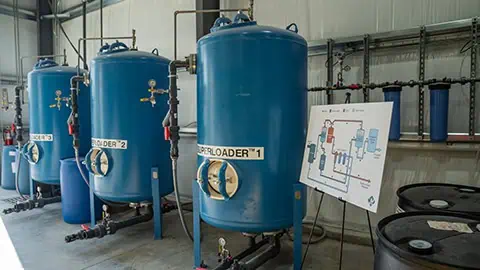
Additional Landfill Leachate and Wastewater PFAS Treatment Resources:
The objective of this study was to evaluate a cross-section of full-scale on-site landfill treatment systems to measure changes in PFAS concentrations. Leachate samples were collected before and after treatment from 15 facilities and were evaluated for 26 PFAS, including 11 perfluoroalkyl carboxylic acids (PFCAs), 7 perfluoroalkyl sulfonic acids (PFSAs), and 8 perfluoroalkyl acid precursors (PFAA-precursors). The transformation of precursors was evaluated by the total oxidizable precursor (TOP) assay. Results showed no obvious reductions in total measured PFAS (∑26PFAS) for on-site treatment systems including ponds, aeration tanks, powdered activated carbon (PAC), and sand filtration. Among evaluated on-site treatment systems, only systems fitted with reverse osmosis (RO) showed significant reductions (98-99 %) of ∑26PFAS in the permeate. Results from the TOP assay showed that untargeted PFAA-precursors converted into targeted short-chain PFCAs increasing ∑26PFAS in oxidized samples by 30 %, on average.
Overall, the results of this study confirm the efficacy of RO systems and suggest the presence of additional precursors beyond those measured in this study. SCS is part of the technical advisory group for this collaboration of the schools in Florida and the EPA. SCS’s Liquid Management Practice is helping the group with on-site work at landfills.
Chen Y, Zhang H, Liu Y, Bowden JA, Tolaymat TM, Townsend TG, Solo-Gabriele HM.
Waste Manag. 2022 Sep 6;153:110-120. doi: 10.1016/j.wasman.2022.08.024. Online ahead of print.
PMID: 36084369
The following universities with EPA are affiliated with the study:
SCS Engineers is hosting a panel on proposed PFAS regulations as EPA continues to work on its goal of adding PFOA and PFOS as hazardous constituents under CERCLA – aka Superfund. EPA is also considering adding certain PFAS as hazardous constituents under Appendix VIII of the Resource Conservation and Recovery Act or RCRA, giving EPA authority to require RCRA corrective action for PFAS at RCRA sites. With data for about 14 PFAS constituents, including some of the newer ones commonly known as GenX, and based on toxicity data, the EPA supports the development of standards for risk-based concentration levels and risk screening levels for ingesting PFAS.
In July’s client webinar, our panelists aim to bring clarity and advice to those operating landfills that may become subject to regulations. The free webinar features a panel of speakers clarifying the recent plans, headlines and health advisories surrounding PFAS, as well as sharing some promising leachate treatment options. SCS’s engineers, scientists and landfill operations experts will speak during the forum and answer your questions. They are also available for follow-up after the 2 p.m. July 21 webinar.
Landfill operators who manage waste streams, leachate and sludges possibly laden with PFAS can attend this event and learn about the latest regulatory changes and proposals surrounding PFAS.
Reprint from a Recycling Today article by Managing Editor Bob Gaetjens.
As the EPA considers regulating PFAS, SCS Engineers helps bring clarity and advice to those operating landfills that may become subject to regulations.
Per- and polyfluoroalkyl substances (PFAS) are under the sharp gaze of the U.S. Environmental Protection Agency (EPA), which plans to determine how toxic the substance is.
There now is data for about 14 PFAS constituents, including some of the newer ones commonly known as GenX. Based on toxicity data, the EPA supports the development of standards for risk-based concentration levels and risk screening levels for ingesting PFAS. The state of Maine announced earlier this year a ban on PFAS in landfill leachate.
The EPA is considering whether to propose that perfluorooctanoic acid (PFOA) and perfluorooctanicsulfonic acid (PFOS) be classified as hazardous PFAS constituents under Appendix VIII of the Resource Conservation and Recovery Act (RCRA), giving the federal agency the authority to require corrective action for PFAS and RCRA sites.
It is with this background that SCS Engineers is hosting a webinar featuring a panel of speakers clarifying the recent plans, headlines and health advisories surrounding PFAS, as well as sharing some promising leachate treatment options. SCS’s engineers, scientists and landfill operations experts will be featured during the forum and can be available for follow-up after the 2 p.m. July 21 webinar.
Landfill operators who manage waste streams, leachate and sludges possibly laden with PFAS can attend this event and learn about the latest regulatory changes and proposals surrounding PFAS.
Certificates of attendance are available for attendees who registered on Zoom and attended the live session.